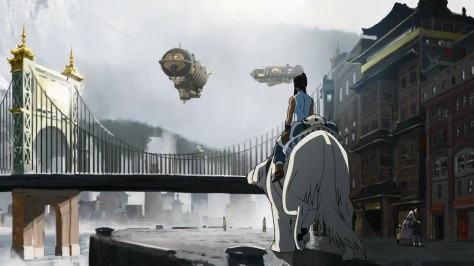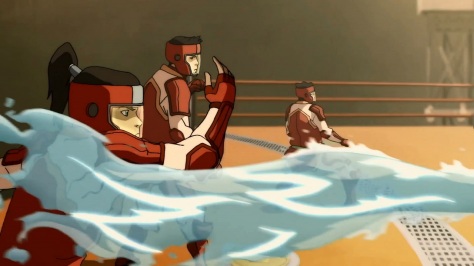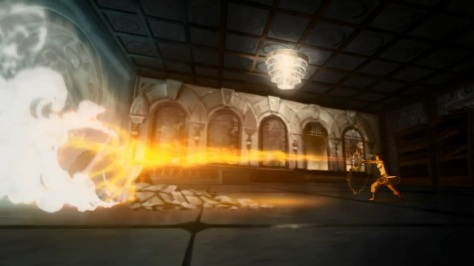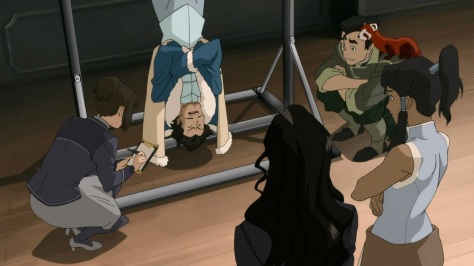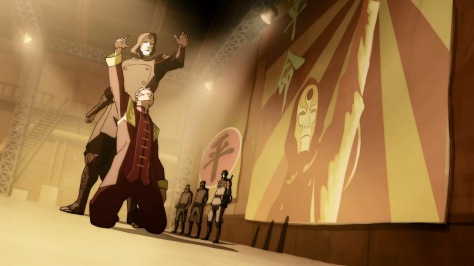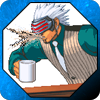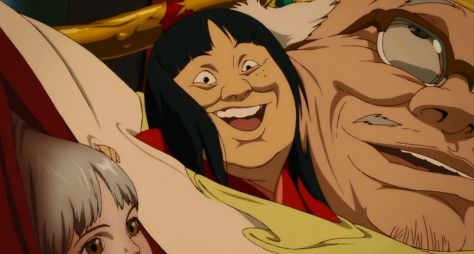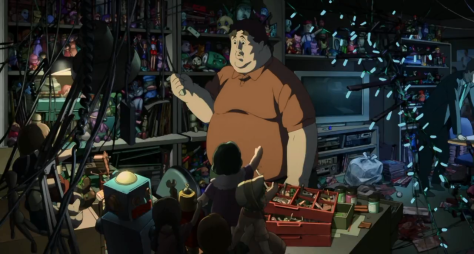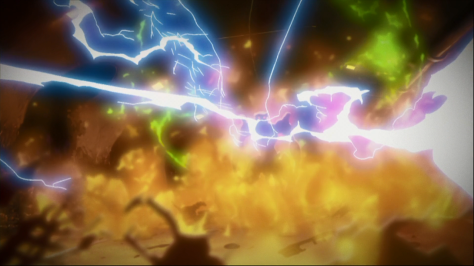Related: Avatar: The Last Airbender (prequel)
Similar: Fullmetal Alchemist
Watched in: English
Genre: Fantasy Action Adventure
Length: 52 episodes (4 seasons)
Positives:
- Korra, as a character and through her arc, displays a rare maturity in the face of conflict.
- A series of villains made intriguing by their flaws and motivations.
- Gorgeous art all-round.
- Fight choreography at the top of its game. No yelling for power.
- A varied supporting cast, each different from the next, each with proper personalities. Also, Varrick is the best.
- Great references to the original series without resorting to info dumps. (Cabbage Corp.!)
- Excellent voice work, infant characters’ most surprising.
- The inclusion of sports, political structures, advances in technology, propaganda, public services, entertainment, and the like, makes for superb world building.
- Doesn’t feel like a re-tread of Avatar.
Negatives:
- One mistake at the end of season one (reminiscent of Avatar’s season four’s finale error).
- It would have been nice to see more Fire Nation.
Note: This review contains implied spoilers from prequel, Avatar: The Last Airbender.
Outside of the new Star Wars film, nothing has as much pressure to live up to its prequel as The Legend of Korra, for me. As it happens, Korra is an exemplar of what a sequel should be. Nothing in Korra feels like a re-tread; the creators knew they couldn’t get away with a ‘Hollywood’ sequel cash-in.
The Legend of Korra starts seventy years after the events of Avatar, during a time of peace, as Korra, the new Avatar, moves to Republic City (think UN capitol in a 1940s Shanghai inspired setting with added zeppelins and Model-T Fords) to learn airbending from Master Tenzin, Aang’s son. However, when she arrives, the city isn’t as peaceful as it appears, for the triad gangs torment the lower echelons of the city and the ‘Equalist’ faction of humans seek to eliminate all bending from the world. Because of their power, some benders have gained higher status, looking down on non-benders. Masked leader Amon and his Equalists begin to capture benders; Amon claims he can remove their power permanently. Korra must stop him.
Like Avatar before it, Korra isn’t this basic plot. It is layered with a half-dozen plotlines woven together to create a deep and compelling narrative. While worrying about Amon, Korra has to deal with politicians trying to seize power in tragedy, master her final element of air, compete as a pro-bender (boxing with the elements in teams of three to push opponents out of the ring, backed by a great commentator) behind Tenzin’s back, shoulder Avatar responsibilities, and have a social life.
Even with this many plotlines, the narrative never feels overstuffed where each plotline tries to choke the others out. I never grew tired of a plotline because there was always another to step-up when one needed a break. I couldn’t find, and believe me I tried, any padding. Even action scenes, the most common source of padding in kids’ entertainment, are the perfect length. There is no power yelling for five episodes, no twenty-episode fights ended with a trump card that should have been used at the start, and the choreography is phenomenal – it has spoiled me. Spoiled! Korra is an intense, close-knit experience with the right amount of quiet moments to pour emotion into the narrative.
At its core, Korra is about characters. From the main to the supporting cast, every character is well thought out and has a purpose in the world. I don’t know where to begin. Aang’s hilarious grandchildren (“Those maggots will bow to me!”)? The aged original cast? The new Team Avatar with Mako’s Batarang eyebrows, Bolin’s humour and innocence, and Asami’s confidence? The other descendants? There’s too many to cover. I could write a review for each individual character, so high is their quality of design. No one feels like a quest-giver NPC waiting for the protagonist to turn up to complete the NPC’s purpose. You get the sense that they all lead lives that don’t revolve around Korra.
In my Avatar review, I mentioned Aang as the weakest (yet still great) of the core characters because of his over-dorkiness in season one and righteous personality (not my favourite). Korra however, is my favourite here, followed closely by Varrick the eccentric inventor and businessman – think Ton Stark if he was completely mad. What I liked most about Korra is her strength and maturity. She doesn’t accept something because a teacher said so. She questions everything, forging her own path. Even when down, she doesn’t whine about how unfair the world is; she whines about how weak she is, how it’s her fault and not someone else’s. And then there is her season-four story arc (no spoilers, don’t worry); I never expected a kids’ show to have the capacity to go this dark. Love it.
There is little to complain about in Korra. As mentioned above, season one’s finale mistake for convenience was a bother. I know they made the decision under the assumption that Korra would only last one season, but still, nothing wrong with leaving a little damage. My biggest disappointment is the lack of Fire Nation. We get hints at, but never see, the state of the Fire Nation, and what few characters make an appearance don’t get much screen time. All that said, no complaint against Korra affected my larger enjoyment, just like in Avatar. Anything I consider “bad” about Korra is only bad by comparison to the rest of the show – the sort of bad that wouldn’t even have time for mention in a lesser art piece due to bigger issues.
Korra is how a sequel should be done. We still have the group of friends with loyalty, infighting, fear, jealousy, love, and the animal companion, but it’s different focus, advancements in society, tournament element, ordinary jobs, big city with a criminal underbelly, politicians, a different kind of enemy, and close-knit conflict, makes for a new and fresh experience. I had high hopes for The Legend of Korra, and I was not disappointed.
Art – Very High
Vibrant action sequences, fluid animation, hand-painted style backgrounds of high detail, and excellent character design. Even the use of CG blends in well. Improved the mouth animations from the first series. (I still can’t un-see the LFR for mouths in Avatar.)
Sound – Very High
The music has advanced with the new technology, using tunes for the era that inspired the Shanghai style setting. Jazz infused with Chinese touches are coupled with more traditional tracks of strings, flutes, and xylophones. Excellent voice work featuring lighter accents this time around.
Story – Very High
A tale of hardships, overcoming trauma, treachery, corruption, and loyalty. Every character is fully realised, filled with subtleties and depth rarely found in programming aimed at children.
Overall Quality – Very High
Recommendation: The Legend of Korra is a must watch adventure. This was a real page-turner; I did nothing but the essentials to survive while watching from start to finish.
(Request reviews here. Find out more about the rating system here.)
Awards: (hover mouse over each award to see descriptions; click award for more recipients)
Positive:
Negative: None.

